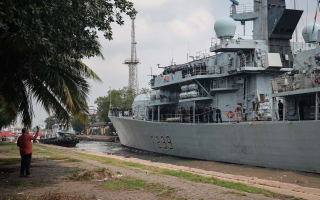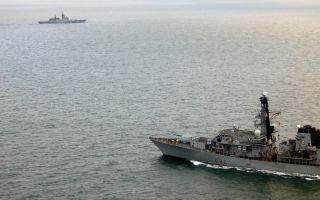Navy
Surrender of the German Fleet During the First World War
Armistice Day is commemorated every year on the 11th November to mark the armistice signed between the Allies of the First World War. From a naval perspective, however, Britain’s greatest moment came 10 days later on the 21st with the surrender of the Imperial German Navy. The submission of the German High Seas fleet in the Firth of Forth heralded a significant moment for both sides.
Under the terms of the Armistice of November 1918, the German battle fleet had to be disarmed rapidly and its newer units sailed to Scotland and surrendered to the combined Allied fleet. Also known as 'Operatoin ZZ', the exercise proved to be the biggest assemblage of naval ships the world had ever seen.
The rivalry between the Royal Navy and the Imperial German Navy stretched back almost beyond living memory. Britain had almost bankrupted herself trying to build more battleships and battle cruisers than Germany.
British gunners in protective gear, toting gas masks against the chance of a German double-cross, watch from the deck of a British battleship as the German fleet steams past to be interned.
After four years of conflict and the battles of Dogger Bank and Jutland, the undefeated Imperial German Navy steamed into the Firth of Forth to surrender. Accompanied by American and French ships, the British Grand Fleet, including 33 battleships and 90,000 men were assembled in what must have been a once-in-a-life-time scene
German naval surrender in 1918 as demanded by Armistice terms:
Pictures courtesy of the Imperial War Museum









